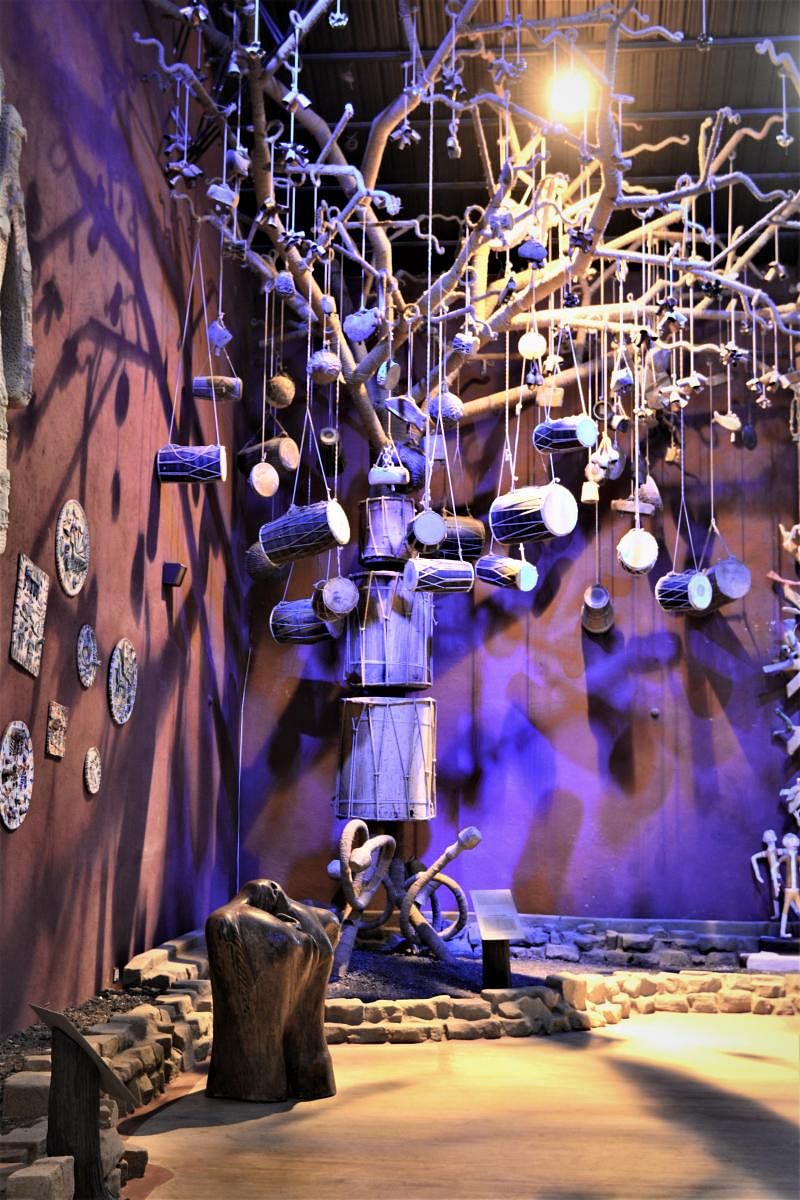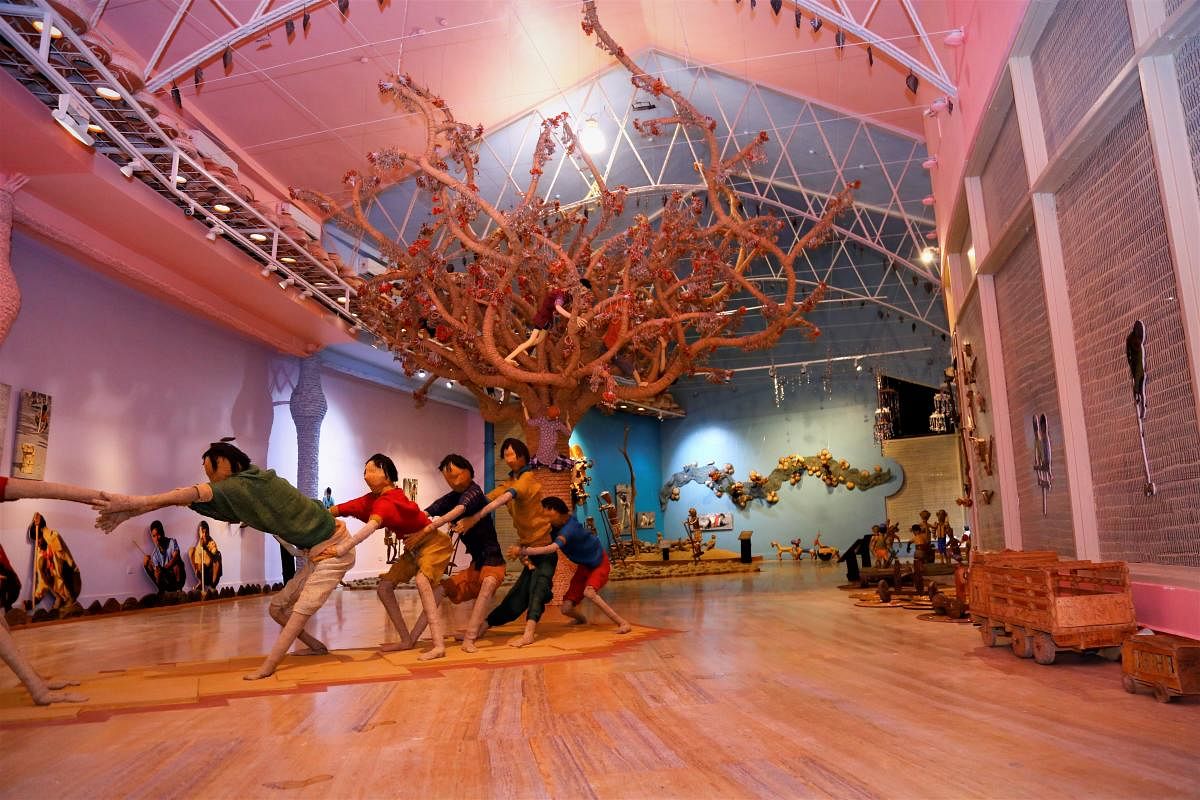

As the world celebrates the International Day of the World's Indigenous Peoples tomorrow, the fact remains that indigenous people throughout the world struggle for their rights to ancestral land, forest resources and traditional knowledge system. Most of them remain at the bottom of the economic pyramid but they nonetheless have age-old wisdom of protecting our ecosystems.
The indigenous people of India, the Adivasis, have a rich and diverse tradition. With education and acquired skills, many of the traditional forest dwellers and hunter-gatherers have come into the mainstream. Thus, tribal museums are a great way to preserve and showcase tribal artefacts and the tribal way of life. The non-tribal also get a glimpse of the tribal lifestyle.
Gone are the days when tribal museums appeared to be a monotonous display of artefacts, they are becoming livelier and tech-savvy. Interactive kiosks, informative mobile apps, audio-visual tools and virtual reality technology that are used to create museum tours and make exhibits interactive, are being embraced here.
Live craft demonstrations, music and dance performances, workshops, seminars, craft melas, handicraft shops and tribal food courts present an enjoyable experience for visitors. Informative, educational yet entertaining with the active participation of tribes.
A labour of love
The Madhya Pradesh Tribal Museum in Bhopal is one of its kind in India. It is a museum of the tribal, by the tribal and for everyone to experience their labour of love. As Ashok Mishra, the curator of the museum would say: “It is the coming together of some crazy people with innovative creative ideas and thankfully the Government supported it.” The best compliment comes from tribes who see it as their home, not a museum.
There is an eye-catching display of artefacts and the play of natural and artificial lights on them. Housed in spacious buildings with a high ceiling, vast open spaces, colourful themed galleries, life-size installations rising from the floor to musical instruments hanging from roofs; it enchants and enthrals.
The latest is the tribal hut project where the Gond, Bhil, Bhariya, Sehariya, Baiga, Kol and Korku are constructing them. “It would be an authentic tribal experience. A tribal family can stay for a year in the hut, showcase their creative skills and culture, prepare and serve tribal meals while the guests sit on the floor, as they would do in their home,” said Ashok Mishra. “Hopefully this experience would inspire them to do something similar in their native village”, he added.
Museum of Man
The Odisha state Tribal Museum at Bhubaneshwar also has traditional tribal huts. The museum has a large collection of silver ornaments, handcrafted combs and tribal weapons. Each of the 62 tribes, the largest in India, have a digitised gallery. It has wholeheartedly embraced technology, the VR technology provides a 360-degree immersive experience that draws visitors. Earning the moniker of Museum of Man for its life-size exhibits, it has a food court serving authentic tribal meals, a herbal garden, auditorium, live craft demonstrations, music and dance festivals; the solar vehicle and wheelchair are thoughtful facilities at the premises.
For tribal martyrs
Adorned with tribal motifs in red and white, the Nehru Centenary Tribal Museum at Hyderabad is also equipped with the latest digital and VR technology. The Sammakka Seralamma Tribal Museum at Medaram is also vibrant with the bull horns sculpture on top.
“The Kumram Bheem Memorial Tribal Museum at Jodeghat is built in honour of the tribal martyr. He fought against the British and the Nizam for the Gond rights over their ancestral land and forests surrounding their village in Jodeghat,” said Satyanarayana Dyavanapalli, curator of Tribal Museums, Telangana.
Many more tribal freedom fighter museums would be coming up across India.
One of the highly revered tribal freedom fighters, Birsa Munda’s sculpture could be seen at the entrance of the Johar Janjatiya Sangrahalaya at Ranchi. Jharkhand and Chattisgarh were two states formed as tribal states in 2000. At Ranchi Museum, there are attractive dioramas that display the livelihood of all the 32 tribes of Jharkhand. There is the use of traditional materials like wood, iron, jute, mud, clay, straw, leaves, hemp and natural resources that capture the essence of tribal ethos.
Ajrakhpur in Gujarat is a unique museum dedicated to the exquisite embroidery work done by the women of 12 tribes in Kutch. The Living and Learning Design Centre is a technically equipped and modern museum where you could also watch weavers, potters, metal workers and block printers working at the craft studio.
In south India, the tribal museum at Udhagamandalam showcases the lifestyle of 36 tribes. The museum at Kozhikode in Kerala has artefacts from 35 major tribes that primarily assist researchers and students in tribal studies. In Karnataka, the state will have its first tribal museum at Mysuru that would showcase the culture, tradition and lifestyles of 50 tribes.
Though each tribe of India has a distinctive identity and culture, the similarity lies in their customs rooted in nature. Use of bamboo, collection of forest produce, indigenous grains, earthenware, metal utensils, art inspired by nature, and other eco-friendly natural resources find a common ground.